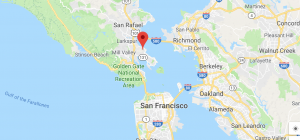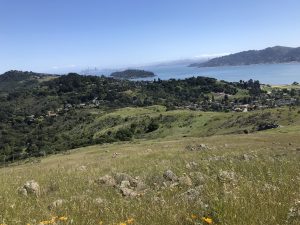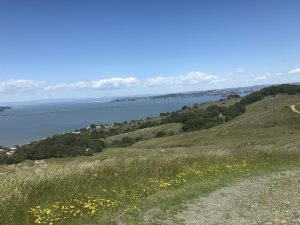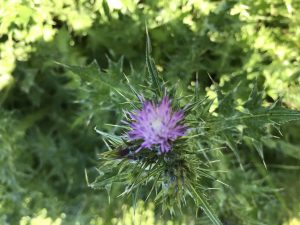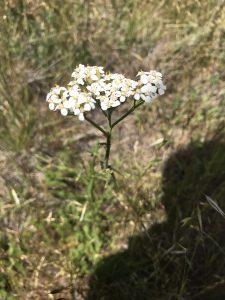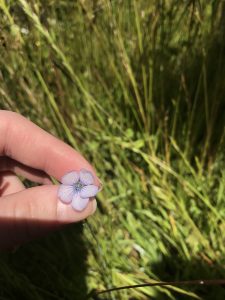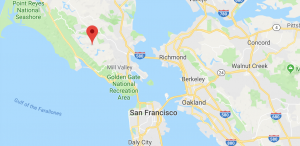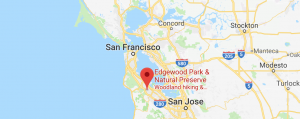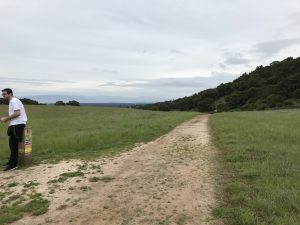Date: 4/19/2018
Location: Ring Mountain, Tiburon– Latitude/Longitude 37.9099° N, 122.4858° W, Elevation 604 ft.
Site Description:
Ring Mountain is full of grassy slopes, large rock structures and serpentine soil. It is a small preserve close to a residential area, but offers a diverse amount of wildflowers. When you first enter, the hills climb upward and then split off into different trails. The trail ranged from dry and flat, rocky, to muddy. California bay trees, live and coast oaks, q-tips, and a plethora of tidy tips were prevalent. Near the top, beautiful views of the bay area can be seen.
Species Description:
Pictured above is the Carduus pycnocephalus, also known as the Italian thistle. It is part of the Asteraceae family and is a non-native species. It is an annual, biennial herb and has an erect stem. It has a simple, alternate, basal and cauline leaf. It has narrow, spiny dentations and is pinnately lobed. It is quite spikey, and does hurt to touch. Its inflorescence has about 2 heads per cluster, is sessile and short peduncled. The flower is bisexual and has a purple corolla. It has a short anther base, and short linear lobes. It is typically found in roadsides, pastures and disturbed areas.
Pictured above is Achillea millefolium, also known as Yarrow. It is part of the Asteraceae family and is a California native. Perennial herb, with umbel like shape, but not coming from one point. Its inflorescence many small white flowers in flat topped clusters. It has feather like dissected leaves, almost fern like. The leaves are pinnately dissected, basal and cauline, and alternate. They are generally found near the coast.
Pictured above is the Linum bienne, also known as Flax. It is part of the Linaceae family and is a not a California native. It is an annual, perennial herb. Its leaves are alternate, sessile, glaborous. Leaves are hard to see because they are pressed against stem. The flower has 5 free petals with purple lines pointed towards the center and green sepals. It is typically found in temperate areas.
Narrative:
We left school around 12:45 pm to Ring Mountain in Tiburon. The weather was in the low 70’s/ high 60’s, slightly windy. The area we were hiking was near a very nice neighborhood and we were able to overlook some amazing houses. As we hiked further up the trail, views of the bay area could be seen all around, including a shot of San Quentin prison. It was a beautiful hike with lots of species we had previously seen before. I realized how many species we knew of at this point in the class and it was amazing how much ground we had covered in the course.

